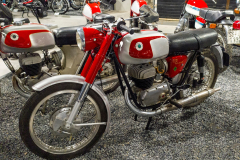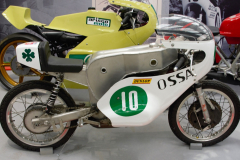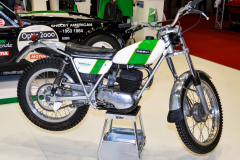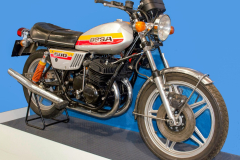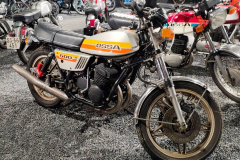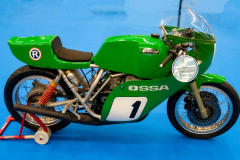Last updated on December 15, 2023
by Mike Ricketts
Eduardo Giró, the son of the OSSA founder, had taken an interest in the USA and some of the motorcycles he designed, were designed specifically for the American market. Eventually, up to 75% of Ossa’s export production went to the USA and Eduardo Giró had a good understanding of the potential that could be accessed, given the right machine.
Joining OSSA in 1964, Eduardo Giró had initially redesigned their existing 160cc engine and created the OSSA 175cc Sport, a bike that sold well and took market share from both the Montesa Impala and the Bultaco Tralla. In 1964/65, a total of 4400 were built.
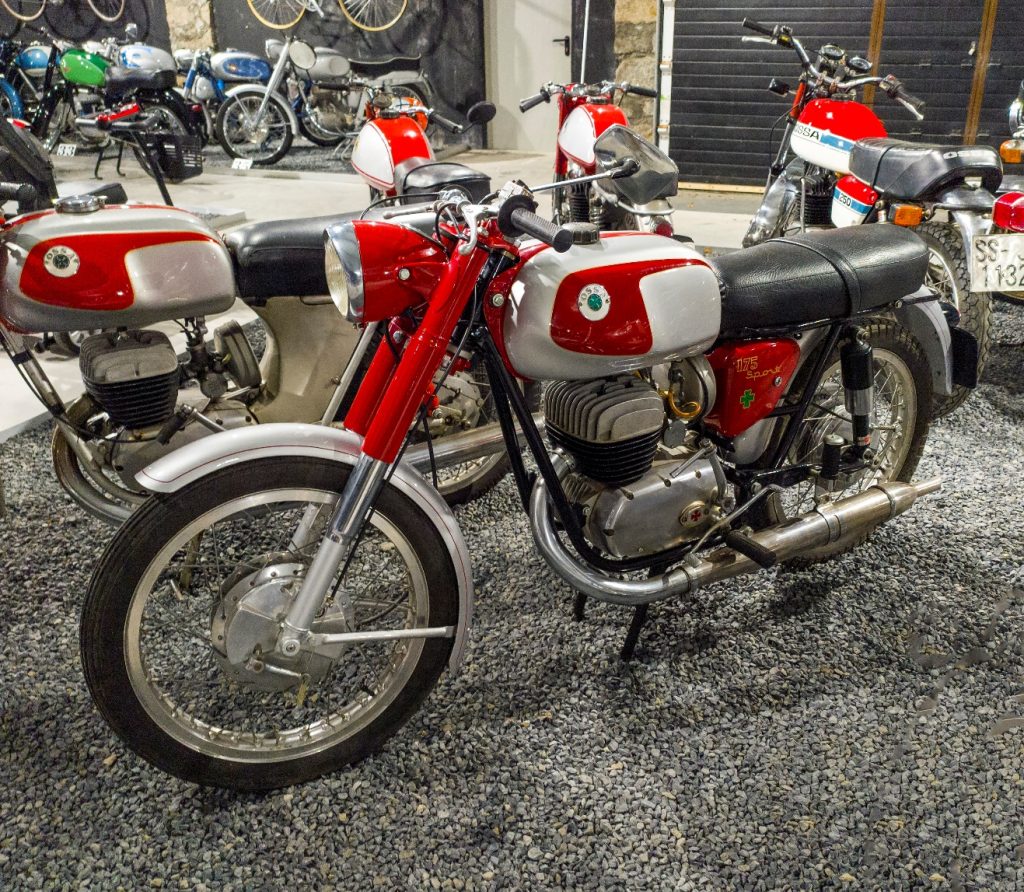
Under Eduardo, the 175cc engine evolves to 230cc and has success in various competitions. In 1967, OSSA 230cc bikes take both first and third place in the prestigious Montjuic 24-hour race. In road racing, the OSSA 230cc becomes successful and in 1967 it takes its first Real Federación Motociclista Española (RFME) National Championship ridden by Santiago Herrero at the start of a short period of road racing that would see some success before ending in tragedy in 1970 when Herrero, riding the now legendary OSSA magnesium monocoque 250cc GP bike, died from injuries sustained at the Isle of Man TT races. His tragic death saw OSSA make an immediate withdrawal from road racing.
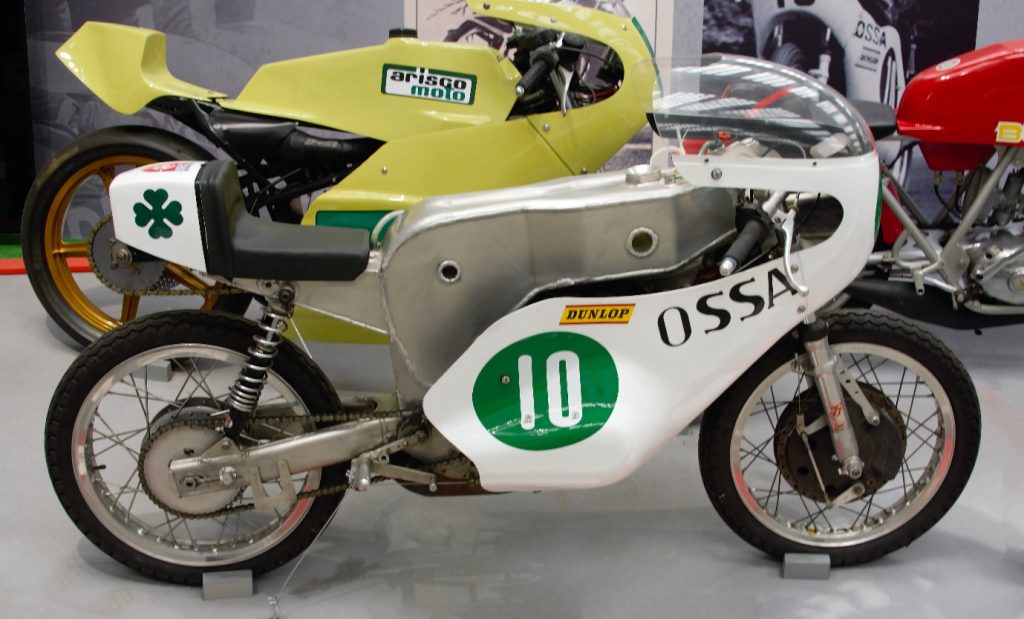
Additionally, during this period, OSSA were stretched in different directions, in part, because of their own success.
They had signed the English trials rider Mick Andrews in 1967, and he helped to develop what would become the 250cc Mick Andrews Replica (MAR) bike. Riding this, Andrews won the European Trials Championship in 1971 and 1972 and he also won the Scottish Six Days Trial in 1970, 1971 and 1972. There was a big demand for this bike (7000 of the 250cc MAR replicas were built between 1971 and 1973) and OSSA had shipped bikes and spares support into the Yankee Motors dealer network in the US.
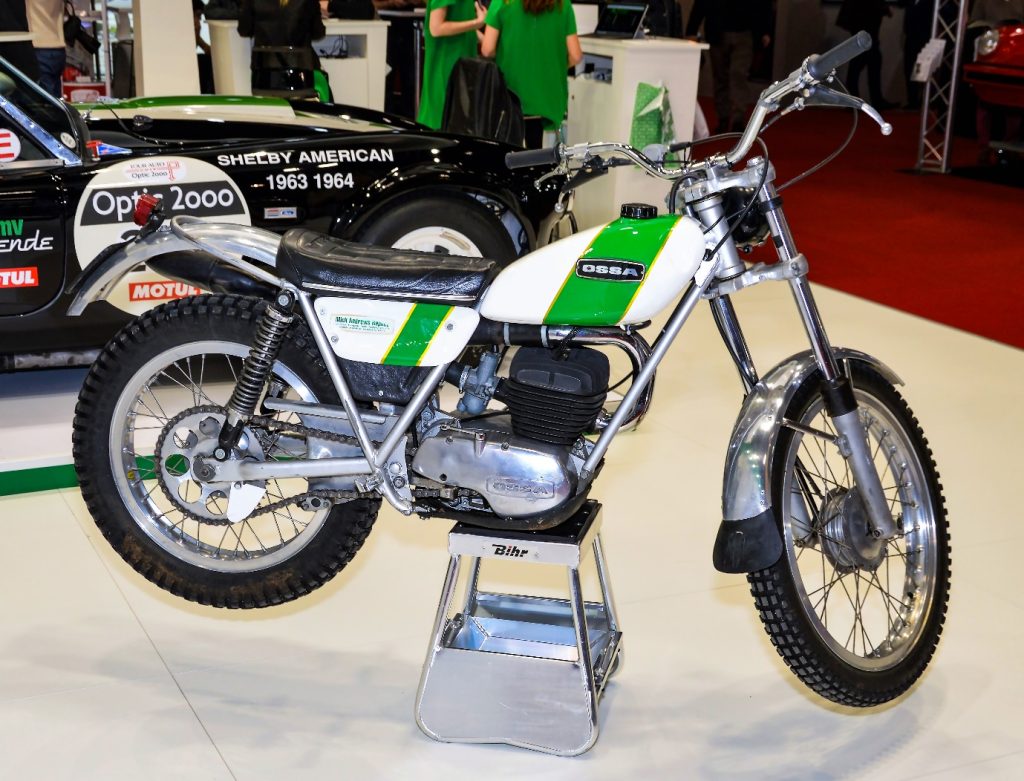
Under the OSSA/Yankee Motors agreement, Yankee Motors was to pay all the tooling, design and technical development costs, but they had made payment conditional on achieving certain production targets.
OSSA had already completed 3000 engines when Yankee Motors ran out of money, and, in the end, less than 1000 engines were shipped to the US. Eduardo Giró visited New York to try and recuperate some of the money owing to OSSA, who now had over 2000 twin-cylinder engines built for Yankee Motors. Giró was able to negotiate to use the surplus engines, but there were certain legal difficulties because these engines had been built for export to Yankee Motors (in theory, the owners of the engines), and OSSA needed permits and permissions to use them.
Giró sought to adapt the twin-cylinder engine to road use as a powerful, lightweight sporty bike, and the Ossa Yankee 500cc was born on paper as he redesigned the engine to adapt it to road use, incorporating a separate lubrication system. A new chassis, bodywork panels and suspension were designed, and front and rear disc brakes were chosen.
Sadly, it took until 1976 before all the permissions and permit issues could be resolved, and the OSSA Yankee went into production. The retention of the Yankee name involved certain legal requirements but, more practically, the engines already had Yankee embossed on the crankcase covers etc.
The OSSA Yankee 500 was the last OSSA designed by Eduardo Giró. An attractive bike, Giró is quoted as saying that had they been able to produce the bike earlier, it could have been the saving of the OSSA brand. The production run was to last only 2 years, during which time 2150 bikes were built. Although much anticipated, the Ossa Yankee proved to be fragile in certain areas as, in many ways, it was a race bike produced for the road.
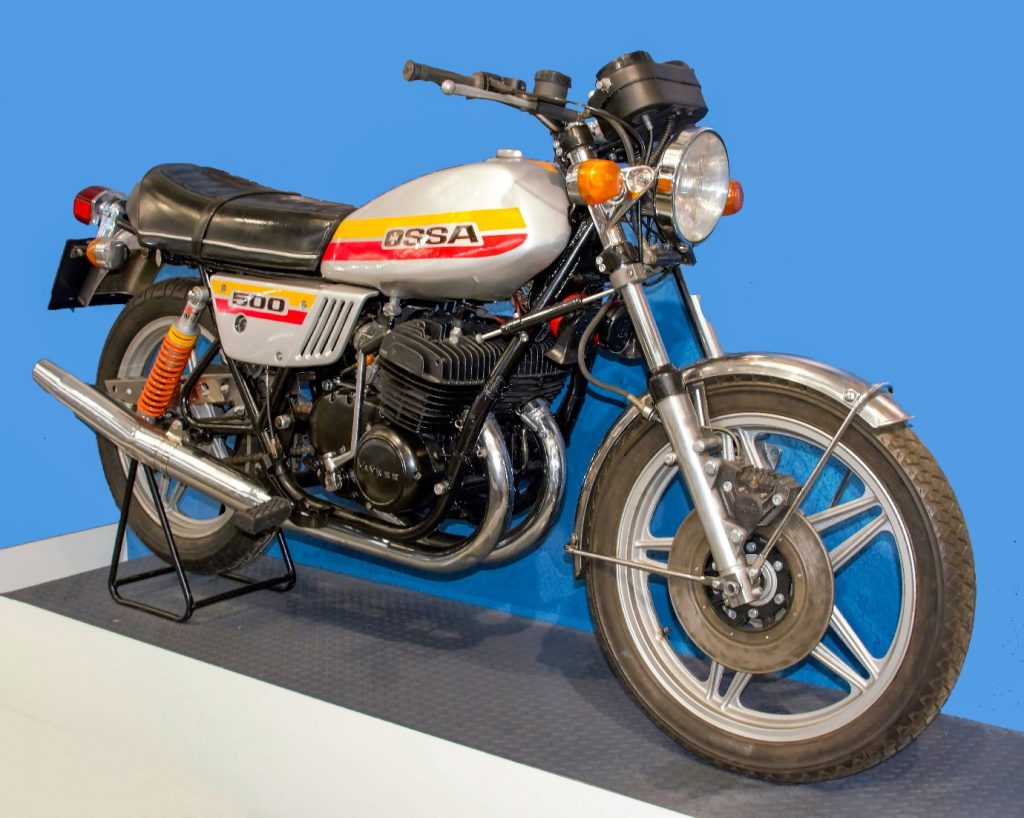
The OSSA Yankee 500 configuration varied little over its short production run. A parallel twin-cylinder, air-cooled engine with 72mm x 60mm bore and stroke, giving an overall capacity of 488cc. It was fitted with Motoplat electronic ignition, kick starting and with a pair of IRZ 24mm carburettors. Compression was 8:1, output was 58 hp at 7500 rpm, delivered through a six-speed gearbox by a chain final drive. Each 18-inch wheel was fitted with a single disc brake, although there was an option to have twin discs on the front wheel.
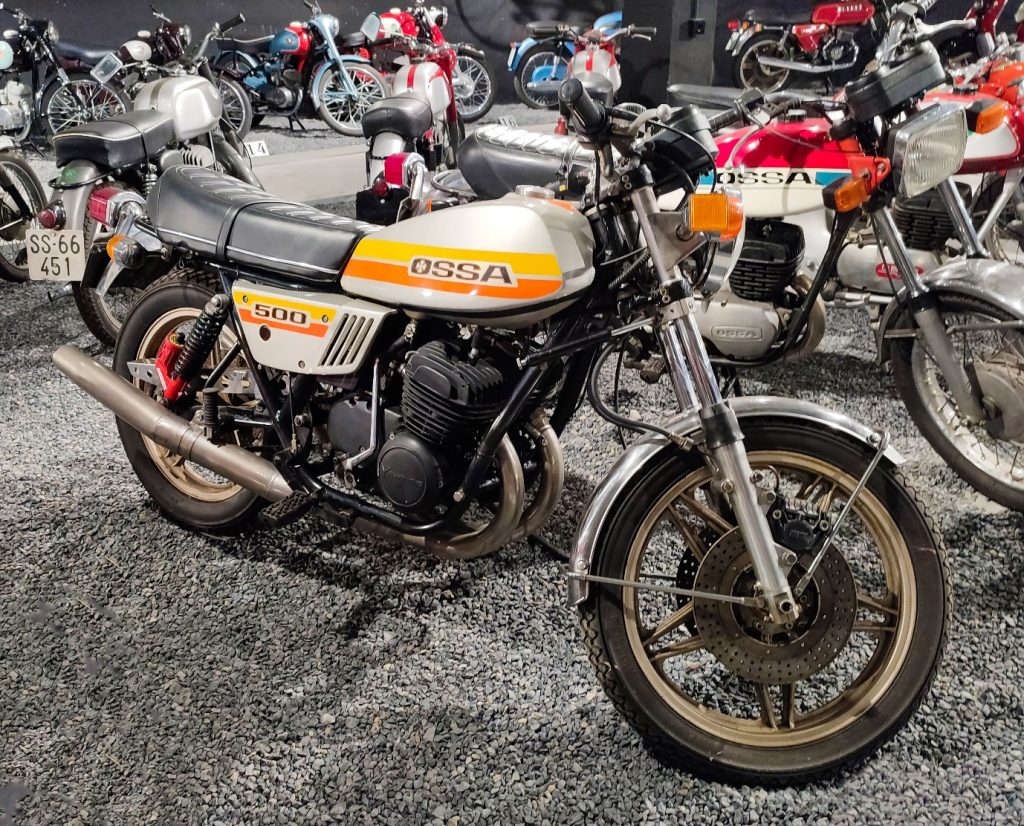
There were reliability issues with different aspects and components of the OSSA Yankee 500 and the bike started to gain an unfavourable reputation. OSSA were stretched financially and there was insufficient technical support and training given to the dealer network. The adverse publicity and deteriorating reputation of the Yankee 500 started to tarnish the whole OSSA brand name in some respects.
Some of the OSSA Yankee 500 sales were adapted for competition but although they were fast, their fragility was still a factor. OSSA had promoted an OSSA Yankee Cup in conjunction with Motociclismo magazine but only the 1977 event took place before it was abandoned.
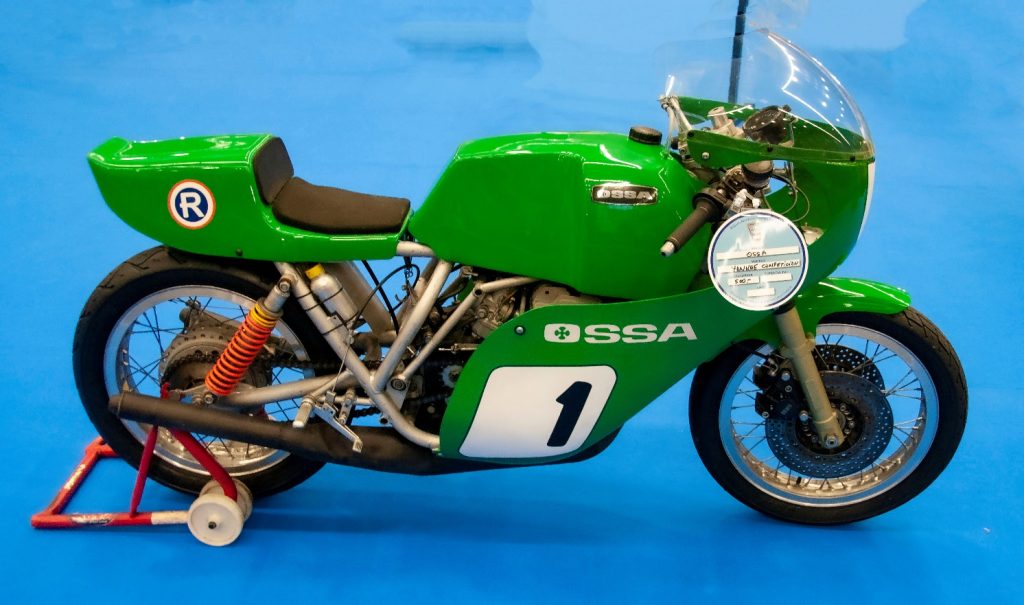
Eduardo Giró remained with OSSA until the family relinquished its ownership and the company transferred to a Labour Co-operative in 1978. He gives occasional interviews and is critical of the political situation that forced the Giró family out of OSSA. The co-operative struggled on until 1983 but it was a slow, painful path to an inevitable demise.

